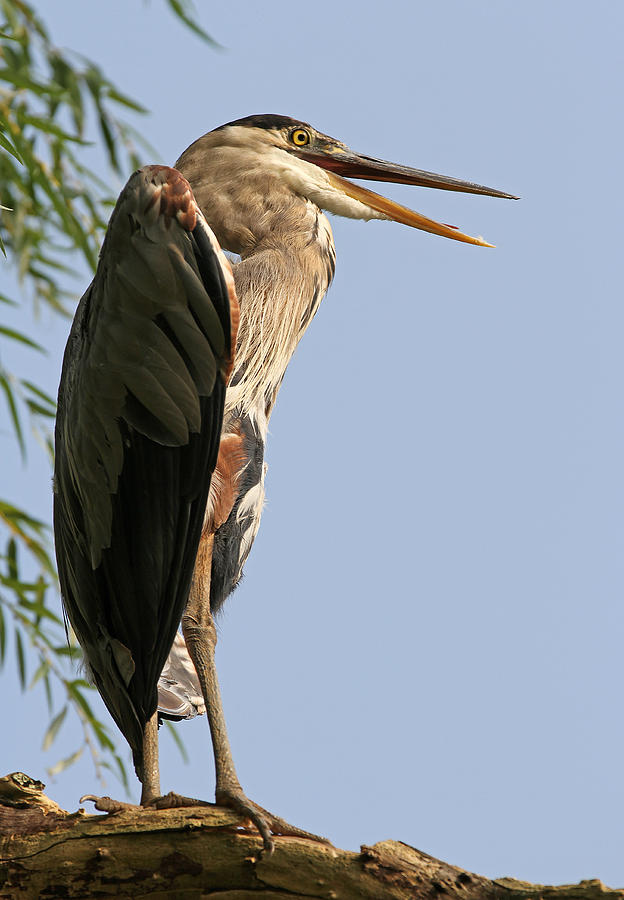
Great Blue Heron

by Juergen Roth
Title
Great Blue Heron
Artist
Juergen Roth
Medium
Photograph - Photography
Description
Great Blue Heron photography picture from the beautiful Wildlife Sanctuary Hall's Pond in Brookline near Boston, Massachusetts. Herons always make for fantastic bird photography images and bird art. It is always a pleasure to watch them and discover their natural behavior. This one I found in a willow tree going after its grooming business for quite some time. There was sufficient time to setup tripod, Canon lens and camera, try different compositions and wait for the magic to unfold.
The Great Blue Heron (Ardea herodias) is a large wading bird in the heron family Ardeidae, common near the shores of open water and in wetlands over most of North and Central America as well as the Caribbean and the Gal�pagos Islands. It is a rare vagrant to Europe, with records from Spain, the Azores, England and the Netherlands. An all-white population found only in the Caribbean and southern Florida was once treated as a separate species and known as the Great White Heron.
Size & Shape
Largest of the North American herons with long legs, a sinuous neck, and thick, daggerlike bill. Head, chest, and wing plumes give a shaggy appearance. In flight, the Great Blue Heron curls its neck into a tight �S� shape; its wings are broad and rounded and its legs trail well beyond the tail.
Color Pattern
Great Blue Herons appear blue-gray from a distance, with a wide black stripe over the eye. In flight, the upper side of the wing is two-toned: pale on the forewing and darker on the flight feathers. A pure white subspecies occurs in coastal southern Florida.
Behavior
Hunting Great Blue Herons wade slowly or stand statue-like, stalking fish and other prey in shallow water or open fields. Watch for the lightning-fast thrust of the neck and head as they stab with their strong bills. Their very slow wingbeats, tucked-in neck and trailing legs create an unmistakable image in flight.
Habitat
Look for Great Blue Herons in saltwater and freshwater habitats, from open coasts, marshes, sloughs, riverbanks, and lakes to backyard goldfish ponds. They also forage in grasslands and agricultural fields. Breeding birds gather in colonies or �heronries� to build stick nests high off the ground.
Uploaded
September 4th, 2011
Statistics
Viewed 4,382 Times - Last Visitor from New York, NY on 04/22/2024 at 10:38 PM
Embed
Share
Sales Sheet






















































